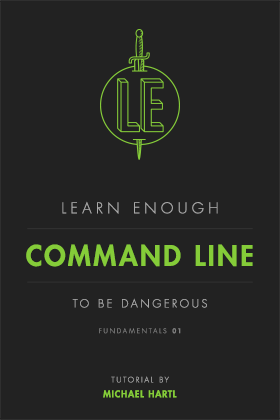 The Ruby on Rails Tutorial was a great way for developers like me to get up and running with no prior Rails experience. However, it does require the reader to have some level of computer software skill so complete beginners could still get lost.
The Ruby on Rails Tutorial was a great way for developers like me to get up and running with no prior Rails experience. However, it does require the reader to have some level of computer software skill so complete beginners could still get lost.
Acknowledging this, the author Michael Hartl has taken on the challenge of getting people up and running in the world of software development under the umbrella of his venture “Learn Enough Society” with a series of titles in the pattern of Learn Enough [X] to Be Dangerous.
I was curious about how his approach, so even though I’m not the target audience I spent some time looking it over.
His idea of starting from Ground Zero is the command line, which I agreed was a fair place to start. The reader is taken through the basics of navigating files and directories and is introduced to some basic command line utilities such as grep.
I applaud the focus on repeatedly prodding the reader to use the man command to learn more information. The manual pages displayed by man were written by programmers for programmers, which meant they tend to be densely packed with jargon difficult to pierce even for experienced users. But that’s where the information is, so one has to dive in to find answers. The tutorial tries to ease readers into man pages by teaching how to search for specific information so the reader is not overwhelmed trying to understand the full text. Baby steps.
Not being the target audience, I can’t judge how effective the tutorial is. I’m sure there are problems that didn’t stand out to me because I already knew the information, almost certainly because it didn’t stand out to the author either.
I did notice one example, though: The tutorial used the computer term argument without explanation. This might cause confusion: “I don’t want to argue with anybody, I just want to learn the command line!” (UPDATE: I e-mailed the author about this observation, and he has added explanations to the tutorial. Very cool.)
